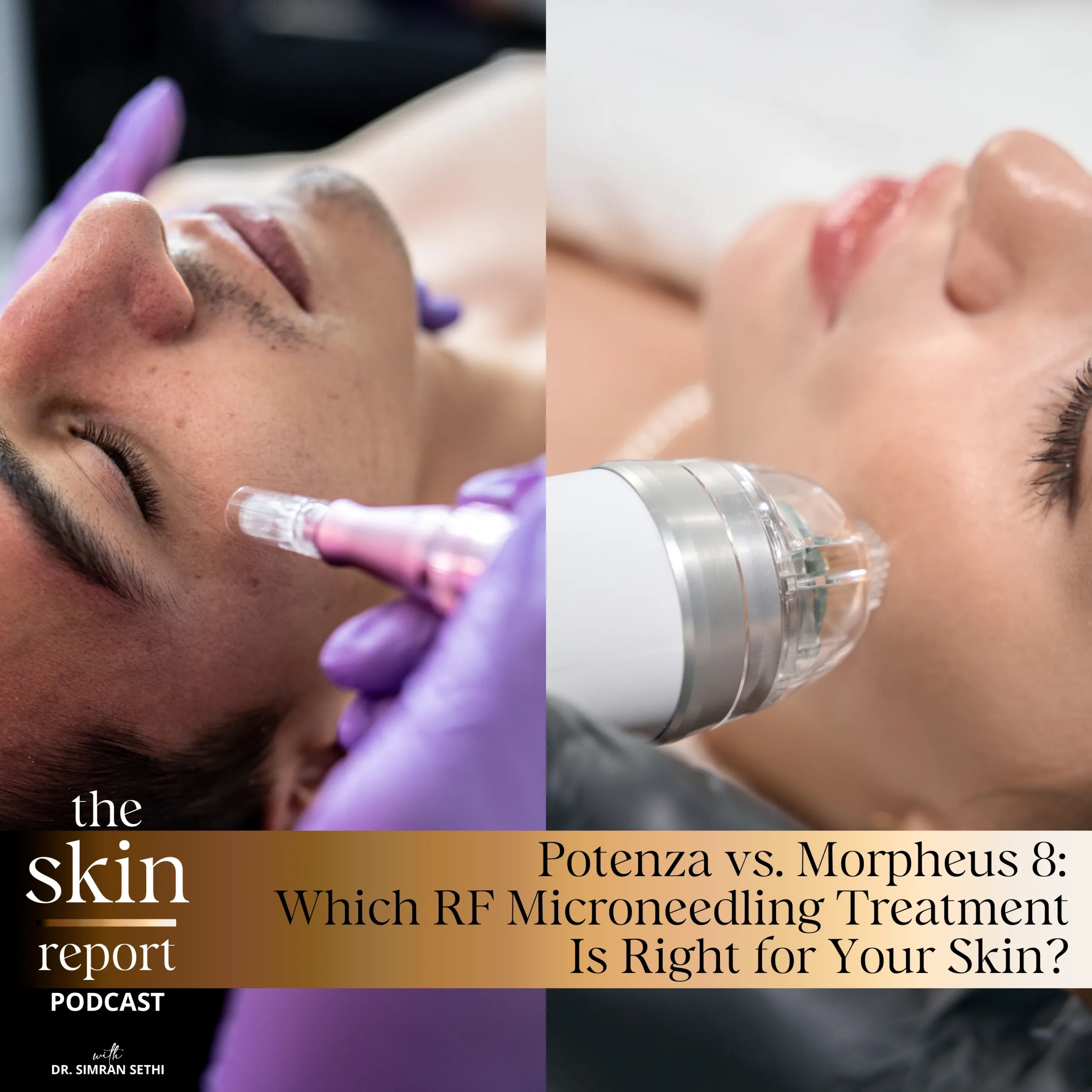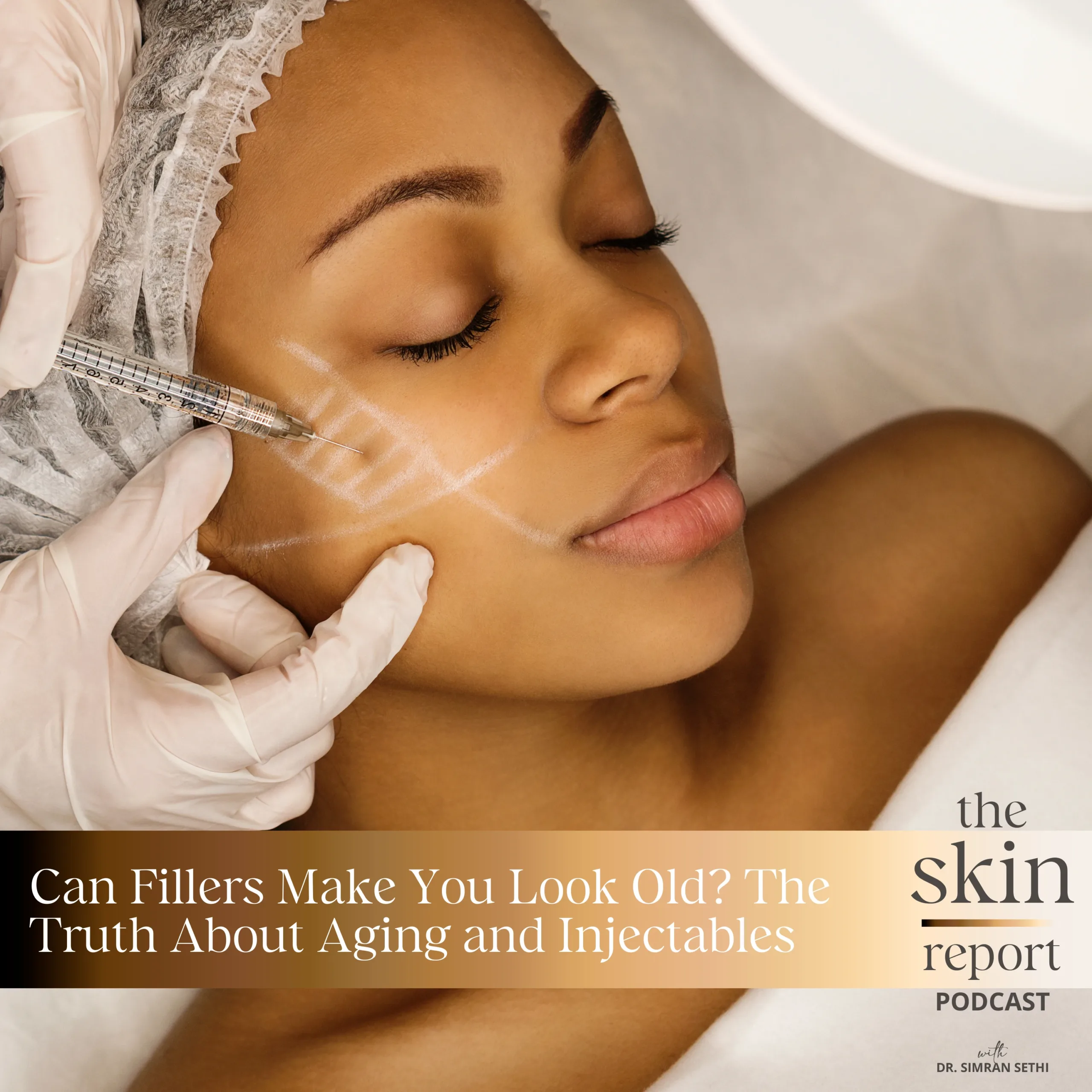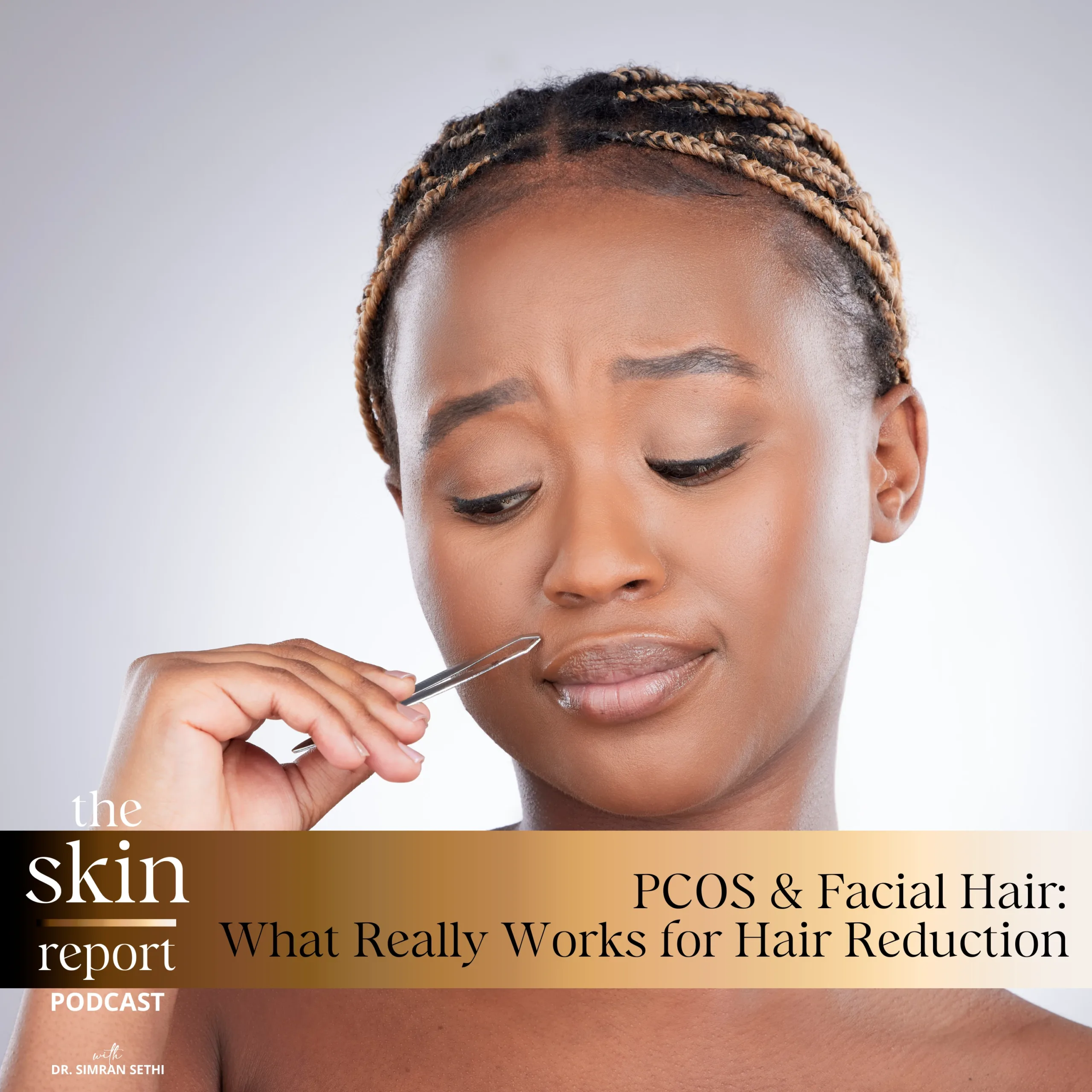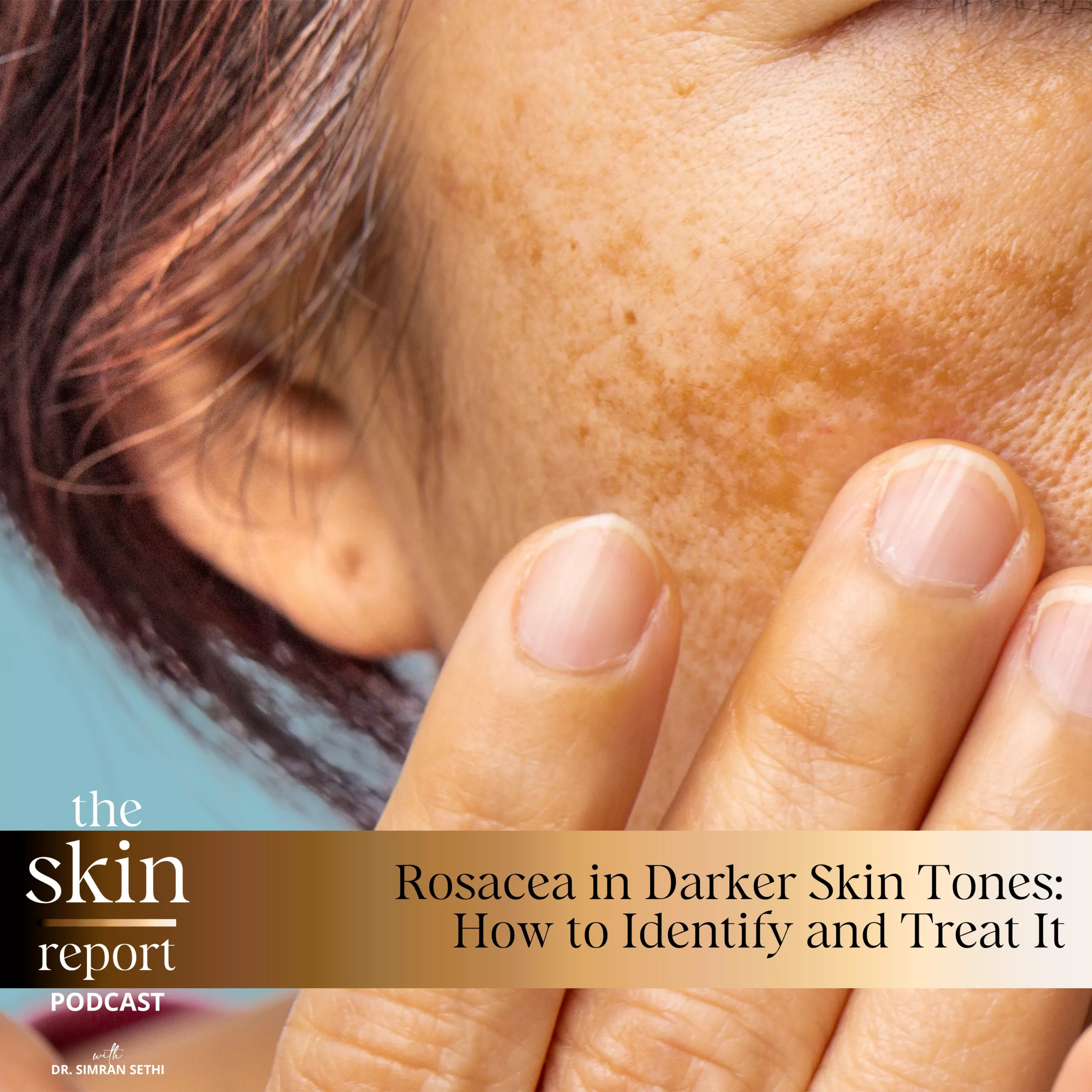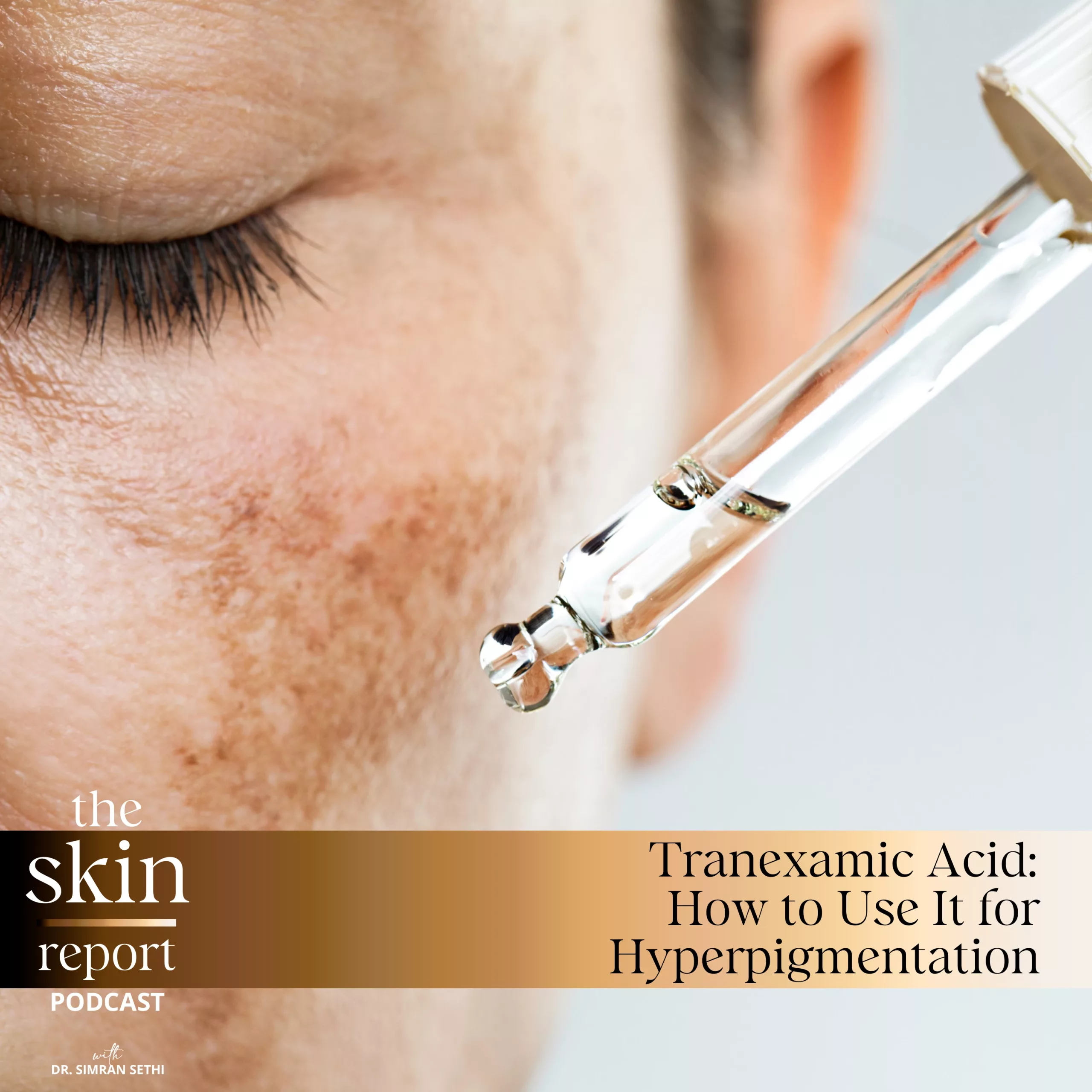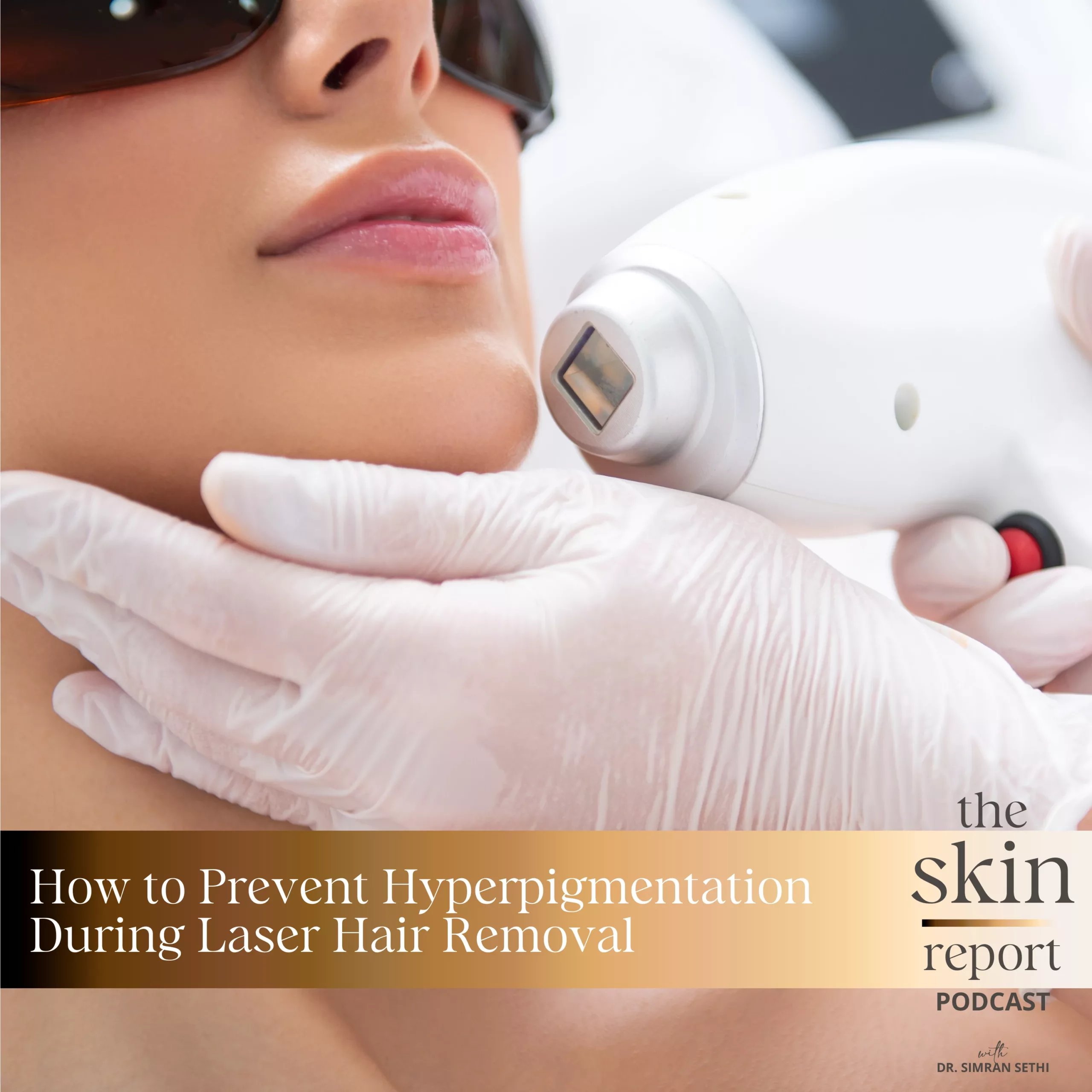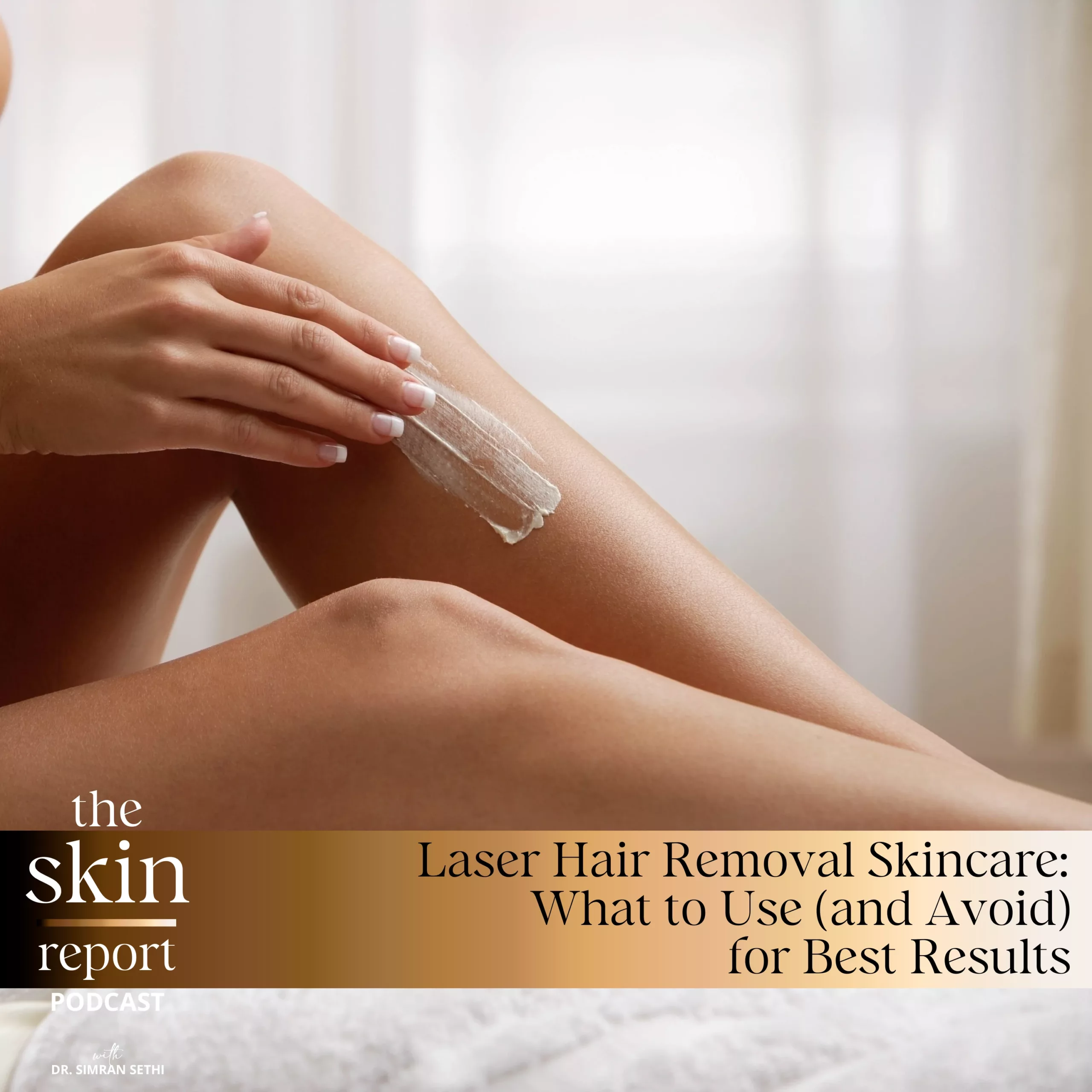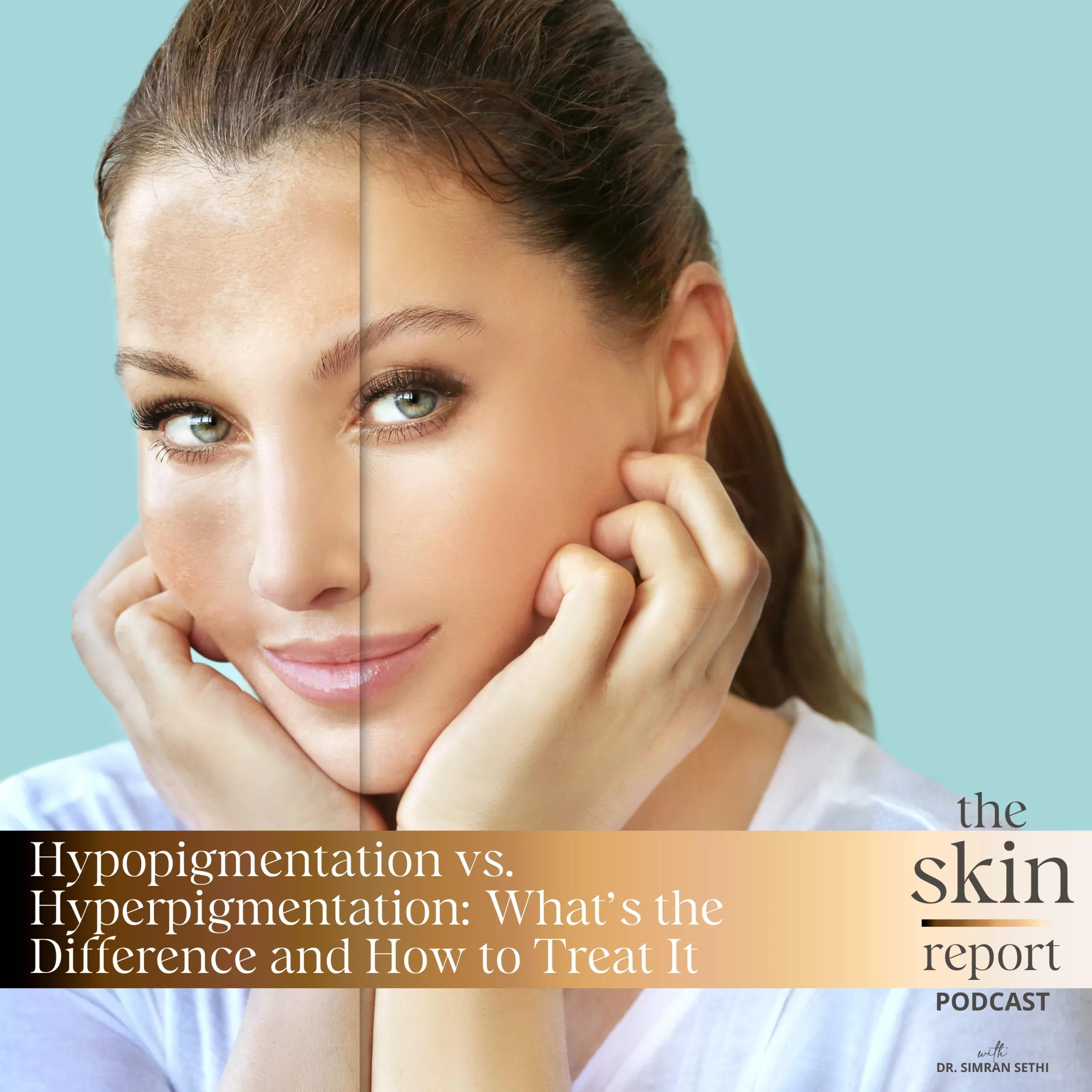Just because products and treatments are marketed towards women of color does not make them automatically safe for skin of color. Unfortunately, choosing the wrong treatment for melanated skin can have damaging consequences, as more melanated skin is prone to hyperpigmentation or uneven increased pigmentation. So what are some aesthetic skin treatments that are safe and beneficial for melanated skin?
The Skin Report is a podcast created to educate listeners on methods to improve skin health for people of all ethnicities and ages. This week’s host Dr. Sethi concludes her September series on the beauty industry and how it approaches skincare for people of color. In this episode, she explains the science behind melanated skincare and why it is important to choose the right products, regimens, and procedures for non caucasian skin types. Unfortunately, the lack of research on skin of color has resulted in less outreach from the aesthetic treatments industry toward people of color. However, Dr. Sethi provides information on several safe medical-grade treatments for melanated skin.
Beauty Instagram: https://www.instagram.com/renewmd_beauty/
RenewMD Beauty Medical Spas, California: https://renewmdwellness.com/
This transcript was exported on September 23, 2022 -view latest version here.
Skin care can sometimes feel overwhelming. Whether it’s finding the right products, ingredients or treatments, there’s a lot out there, but not always for women of color. That’s why I set out to educate myself and others so that we can all feel beautiful in our skin.
Hello, and welcome to The Skin Report. I’m Dr. Simran Sethi, an internal medicine doctor, mom of three, and CEO and Founder of RenewMD medical spas and Skin by Dr. Sethi.
We’re going to be doing something a little different. In fact, for the entire month of September we’ll be doing a deep dive into the relationship between people of color and the skincare industry, the past, the present and the future.
This is our fourth and final episode of the September series, so if you haven’t already, go back and check out our previous three shows. During those episodes we covered the science behind skin of color, racism in the skincare industry, and the most common skin conditions people of color face. Today we’ll be tackling some aesthetic skin treatmentsthat are safe and beneficial for melanated skin.
As we discussed in our last episode, more melanated skin is prone to hyperpigmentation or uneven increased pigmentation. Understanding this concept helps us make informed decisions about our skincare products, regimens and procedures that are effective and safe in non-Caucasian skin type.
In this September series, and in the very first episode of The Skin Report, we spoke about how the most superficial layer of our skin, the epidermis, houses our melanocytes, which are pigment-producing cells. This layer is mainly responsible for protection. The epidermis filters out harmful UV and blue light rays from damaging the skin proteins in the deeper skin layers. It also fights bacteria and viruses, preventing them from entering the body.
The second layer of skin, the dermis, generates new skin proteins like collagen and elastin that give our skin its integrity and elasticity, making it an even stronger protector, and of course making the skin look healthy and radiant.
Despite every person having the same amount of melanocytes, those with darker skin tones have more active ones. This is a great advantage as the more melanin we have the more our skin can filter out damaging UV and blue light rays. As a result, the dermal proteins in darker skin tones are better protected and the skin itself can better resist fine lines and wrinkles.
However, more active melanocytes also means greater pigment produced when the skin is exposed to insults such as acne, burning or inflammation, as in the case of eczema or sensitivity to products. Unfortunately darker skin tones can also develop abnormal amounts of melanin due to these insults or improper treatment of these conditions. This [inaudible 00:03:13] more skin conditions that peopleof color must address, like hyperpigmentation. Therefore, melanin-friendly products should be a top consideration when developing skincare products and treatments.
Scientists have understood melanins production for quite some time. So what products and treatments have been developed to treat these so far? Let’s walk through a historical timeline of our knowledge and why it really doesn’t work, when we return.
The Eurocentric view of beauty that many Eastern cultures still maintain have fueled the desire toget lighter skin in the fastest time possible. Skin has a natural cycle that can only speed up to a certain level, so when a product promises instant results or results in just a few weeks, you should be skeptical.
In today’s market, skin lightening creams are widely marketed to women of color. Many of them contain ingredients that promise to reduce pigmentation, but can instead trigger more. Most of these lightening creams include hydroquinone, which can in some people stimulate more melanocyte activity, especially when used indefinitely. Many consumers don’t know this.
Another common group of skin lightening agents is high concentrations of chemical exfoliants, like glycolic or lactic acid. If you remember from Episode 14 of The Skin Report, we dove into which exfoliants are best for which skin types and tones. I highly recommend all of my listeners, especially those with more melanated skin, to listen to that episode. Finding the best exfoliant for you can either make or break your skin health and appearance.
Finally, some women use facial hair bleaching creams made with hydrogen peroxide to lighten it. Like most products with hydroquinone, these agents actually trigger inflammatory reactions which aggravate our melanocytes, making them produce uneven pigmentation with a vengeance. This creates a dangerous cycle of aggravating cells while attempting to treat pigment, which only causes more pigment that consumers then try to treat with the same products. Just because these products are marketed towards womenof color does not make them automatically safe for skin of color.
Now, don’t get me wrong. There is a safe way to apply hydroquinone and glycolic and lactic acids. I even do it in my own practice. However, I only prescribe products with these ingredients for women of color under strict supervision and in the context of treatments for a short period of time. I cannot tell you how many times I’ve had to put a patient with melanated skin on a skincare cleanse because she’s been on high concentration chemical exfoliants and 4% hydroquinone to treat pigment, but her skin is more uneven than before and super-sensitive to just touch.
This over-aggravation of melanocytes is a common problem, and I truly blame skincare marketing practices for this. They prey on people of color and the pressure they feel to fit into a white mold. Instead, let’s change our mindset from fighting melanin to protecting it and allowing it to function normally instead of abnormally and creating abnormal amounts of pigment. Where do we even begin?
We will feel better once we embrace our melanin as our key defender against skin cancer and aging. When melanocyte activity’s uneven in the case of acne scars or sun damage, we want to work towards bringing its activity back to a normal balanced state. Keeping our melanocytes healthy while not increasing their activity, but balance them to keep functioning and producing even amounts of pigmentation, melanocytes are a natural and beneficial cell in our skin.
For example, why do darker tone babies not have uneven pigmentation on their cheeks or around their lower face like many people of color do as they age? A baby’s skin hasn’t been exposed to insults or aging, and it is demonstrating what normal melanocyte activity does. If we were to correct skin insults instead of exposing our skin to more aggregations with harsh products, could we not enjoy the same radiance and glow that younger skin has?
Depending on severity, we can achieve glowing skin with a two-pronged approach. If every person of color adopted a skincare regimen that nourishes and amplifies their skin renewal cycle, I can guarantee that in as short as one month their skin will look healthier and more radiant.
Embracing the skin renewal cycle and our melanin is the fundamental basis of my skincare line and my aesthetics practice. Before I go any further, I’d like to say that if you haven’t listened to Episode 1 of The Skin Report, go back and do so. In that show I outlined what exactly the skin renewal cycle is and how it works. It’s important to understand this concept to grasp the ones that will follow, as skin cycling truly is the key to unlocking our most beautiful and healthy selves.
While the skincare industry has heavily marketed skin clearing and lightening products to women of color, the aesthetic treatments industry has done the opposite. Medical aesthetics is the practice of minimally invasive procedures to correct issues related to skin aging, texture and pigmentation. In medical aesthetics we also perform procedures that enhance facial features, like cheek, chin and lip augmentation. While these procedures are medical, they’re also cosmetic and elective, and therefore aren’t covered by health insurance.
If you’d like to learn more about clinical grade aesthetics, check out Episode 13 of The Skin Report where we dive into medical spas, what they are, and what they can do for you. Injectables like Botox and fillers, lasers and microneedling, deliver these aesthetic treatments. The manufacturers of these products and devices advertise directly to consumers, but also largely to doctors who are the ones that perform the procedures on patients.
In my entire time in the medical aesthetic space, I have not seen one company market their treatments to people of color. Why is this? Are they just not interested in this group of patients? Is there not enough demand amongst this group? Unfortunately, the answer lies in what we discussed in our previous two episodes in the September series. There is simply a lack of research for skin of color.
Most people who come to my office are clear about one thing, lasers are harmful to their skin and they’ve been turned away by other doctors as there aren’t any treatments that are safe in darker skin. I was actually one of those patients early on. The reality is that lasers are a broad category of devices, and while many can be harmful for melanated skin, a specific group of them are extremely safe and very effective. We’ll dive into laser treatments as an example of how people of color can navigate skincare when we return.
In Episode 7 of The Skin Report we gave an introduction to certain medical grade treatments, including lasers. If you’ve not had the chance to build a basis of understanding for this topic, I would highly suggest going back to Episode 7 to learn more.
For now, I’d like to summarize that lasers clear acne scars, dark spots and fine lines by creating a controlled injury to the skin and initiating an accelerated skin repair response. Over a series of treatments, this will generate a brand new layer of healthier, younger and clearer skin.
Remember the three skin insults I mentioned earlier, breakage, burning, and inflammation? Most lasers emit heat or light to trigger a controlled skin injury, and this burning is what aggravates melanocytes and causes them to produce an abnormal and uneven amount of pigment, hence why many people of color do not find laser treatments helpful. Additionally, most lasers only work in the epidermis which is where melanocytes live, so if they hit this layer and deliver heat or light, they’re definitely putting the skin at very high risk of pigmentation.
So how can skin of color be treated with lasers or really any aesthetic skin correction device? To correct scars, dark spots and wrinkles in skin of color, devices have to create their controlled skin injury in the dermis instead of the outermost layer and melanocyte-rich epidermis, and equally and importantly, this must be done without heat or light.
The PicoSure laser and microneedling can accomplish this, which is why they’re the mainstay of my aesthetic practice. We’ll expand upon these treatments in upcoming episodes, but for now please know that there are great options for people of color. You should not have to accept being turned away by aesthetic doctors who likely justdo not have enough experience to treat your skin type, but that’s not every doctor, just like how it isn’t every laser. PicoSure laser delivers energy, not heat or light, very rapidly to the skin, which then blasts the deep layers to trigger a skin repairresponse.
By mechanically blasting deeper skin layers, PicoSure laser delivers more effective collagen production and blasts already existing melanin in its path, instead of aggravating pigment producing melanocytes. Other lasers deliver energy too, but slowly, which means that this energy converts to heat or light early on in the superficial epidermis and has the high risk of triggering abnormal melanin production.
Finally, microneedling which can be done by itself with plasma-rich platelets, or PRP, or radio frequency, is another treatment which produces beautiful and safe scar, wrinkle and pigment correction in more melanated skin tones.
This concludes our final episode in our September series. I hope you enjoyed taking a deeper look at skincare for skin of color as I have. In October, we will be tackling another series, this time examining melasma, what it is, what lifestyle changes mitigate it, and how to treat it.
If you’d like to learn more about science-backed skincare or medical aesthetic treatments, please subscribe to and turn on notifications for The Skin Report so you always know when a new episode is out. We have a newsletter that you can sign up for on theskinreportbydrsethi.com so that you can stay up to date on all our new episodes, blogs, products and more.
Additionally, if you have a skincare question or want to make an episode topic recommendation, please message me at renewmdwellness.com which is linked in my show notes, and I’ll be sure to answer your question in an episode soon.
Thanks for listening in. Until next time, love the skin you’re in and celebrate your beauty.
Transcript by Rev.com

